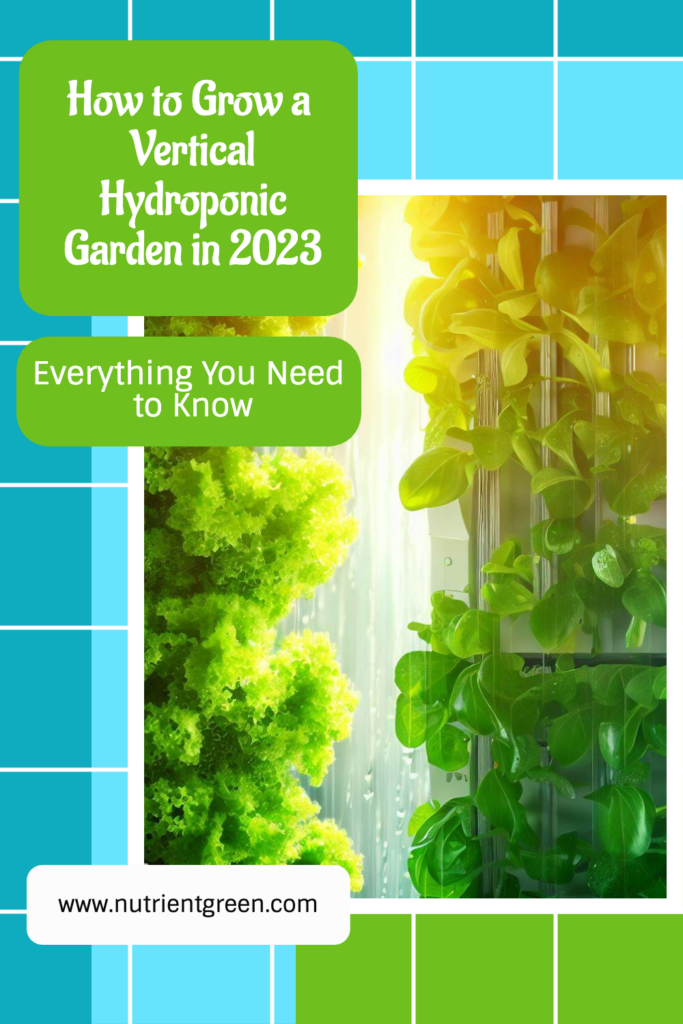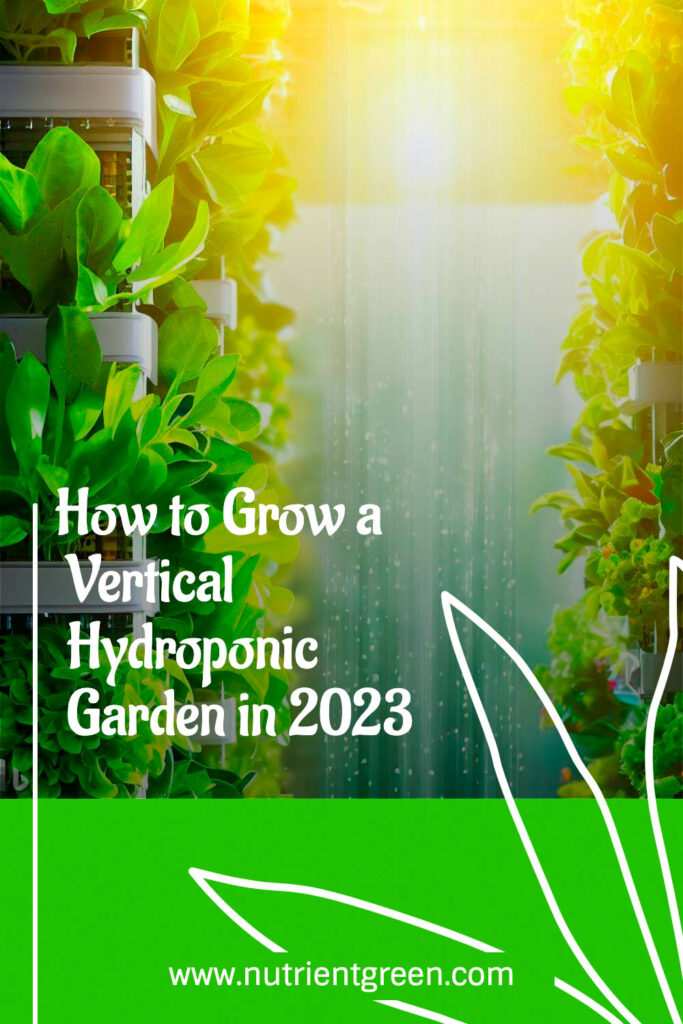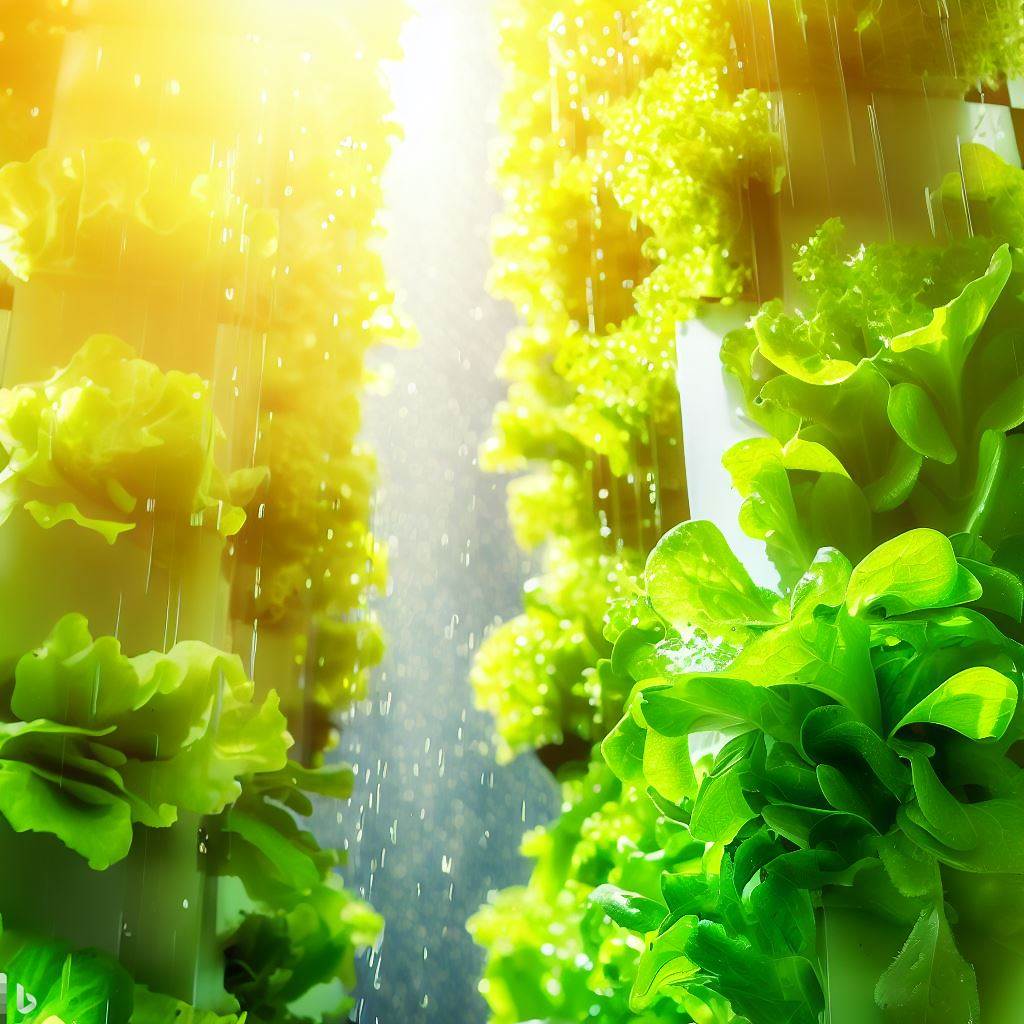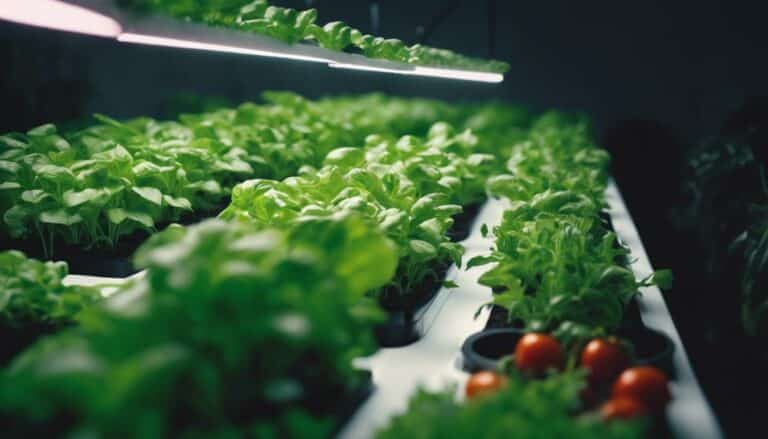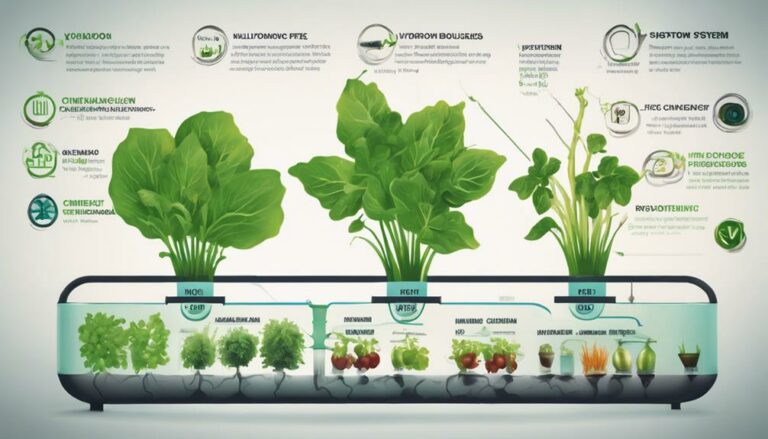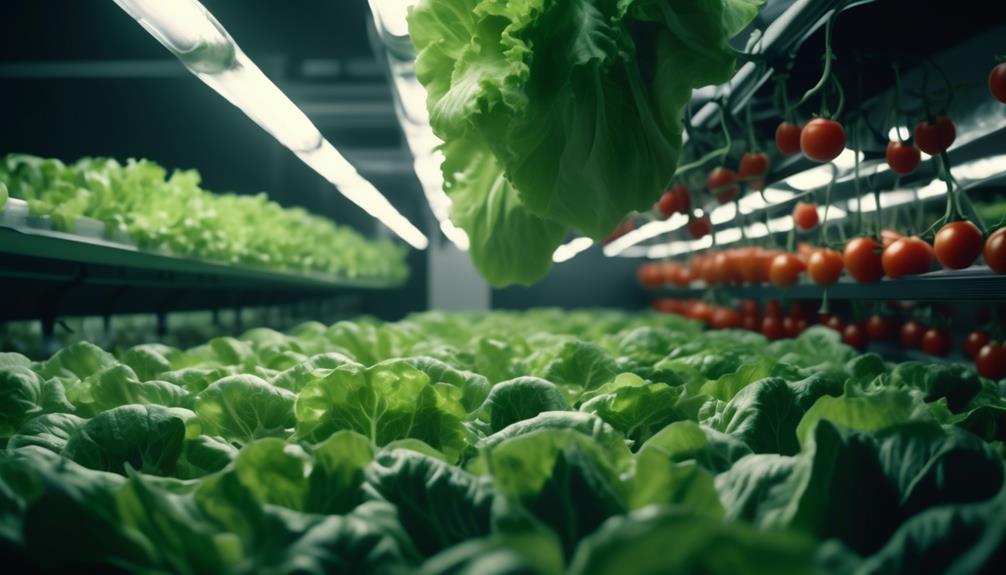Table of Contents
Do you love gardening but have limited space? Do you want to grow your own fresh and healthy food but don’t have access to soil or water? Do you wish you could harvest more crops in less time and with less effort?
If you answered yes to any of these questions, then you might want to consider vertical hydroponic gardening.
Vertical Hydroponic Garden: How to Grow More Food in Less Space
Vertical hydroponic gardening is a method of growing plants without soil in vertically stacked layers using water and nutrients. It is an innovative and efficient way to produce food in small spaces with minimal resources.
In this article, we will explain what vertical hydroponic gardening is and why it is beneficial. We will also show you how to build your own vertical hydroponic system step by step. We will also give you some tips on how to maintain your system and what to grow in it. We will also review some of the best vertical hydroponic systems on the market in 2023.
By the end of this article, you will have all the information you need to start your own vertical hydroponic garden and enjoy fresh and delicious food all year round.
What is a Vertical Hydroponic Garden?
A vertical hydroponic garden is a system that grows plants indoors without soil. Instead,
the roots of the plant are suspended in water and/or air to provide all necessary nutrients for growth.
A typical vertical hydroponic system consists of four main components:
- A vertical structure that supports the plants
- A container that holds the growing media
- A water reservoir that stores the nutrient solution
- A pump that circulates the nutrient solution
The vertical structure can be any kind of frame or tower that can hold multiple containers or pots with plants. The containers can be made of plastic, metal, or any other material that can withstand moisture. The growing media can be any inert material that can support the plant roots such as rockwool cubes or perlite.
The water reservoir can be any large container or tank that can hold enough water for several days or weeks depending on the size of your system. The nutrient solution is a mixture of water and fertilizer that contains all essential elements for plant growth such as nitrogen, phosphorus, potassium, calcium, magnesium, sulfur, iron, zinc, copper, manganese, boron, molybdenum, chlorine, etc.
The pump is a device that moves the nutrient solution from the reservoir to the containers through tubes or pipes. The pump can be either submersible or external depending on your preference.
The basic principle of a vertical hydroponic system is simple:
- The pump delivers the nutrient solution from the reservoir to the containers through tubes or pipes
- The nutrient solution flows through the containers where it reaches the plant roots
- The plant roots absorb the water and nutrients from the solution
- The excess solution drains back into the reservoir where it is recycled
The cycle repeats itself continuously ensuring that the plants always have access to fresh water and nutrients.
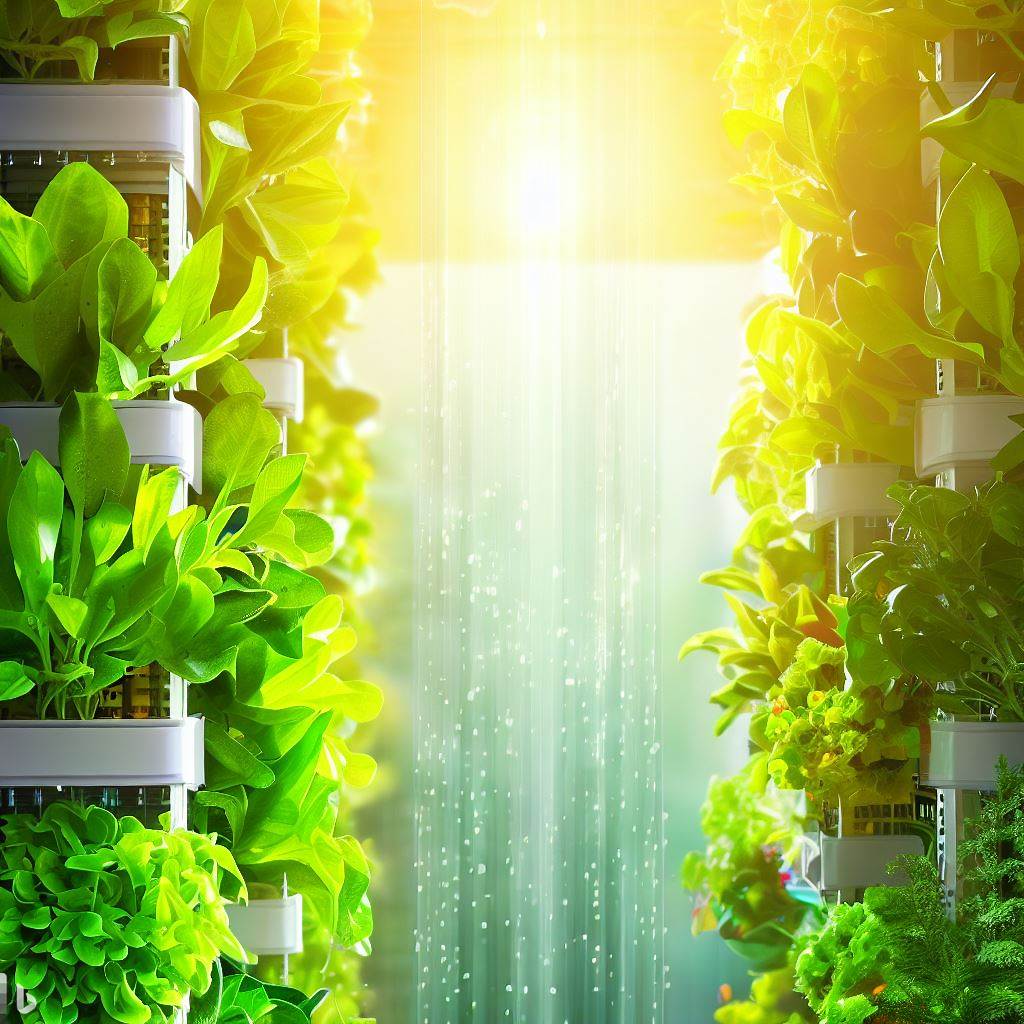
Why Choose a Vertical Hydroponic Garden?
Vertical hydroponic gardening has many advantages over traditional soil-based gardening especially for urban dwellers who have limited space or resources.
Some of these advantages are:
- Space-saving: A vertical hydroponic system can grow more plants in less space than a horizontal one because it utilizes the vertical dimension instead of the horizontal one. You can grow plants on walls balconies rooftops windowsills or even indoors.
- Water-saving: A vertical hydroponic system uses up to 90% less water than a soil-based one because it recycles the water instead of losing it through evaporation or runoff. You only need to refill the reservoir occasionally depending on the size of your system.
- Pest-free: A vertical hydroponic system eliminates the need for soil which is often the source of pests diseases weeds or fungi that can harm your plants. You also don’t need to use pesticides herbicides or fungicides which can be harmful for your health and environment.
- High-yield: A vertical hydroponic system can produce up to 50% more yield than a soil-based one because it provides optimal conditions for plant growth such as light temperature humidity pH level nutrient concentration etc. You can also harvest more frequently because the plants grow faster and healthier.
- Quality: A vertical hydroponic system can produce higher quality food than a soil-based one because it avoids contamination from soil pollutants heavy metals pathogens or chemicals. You also get fresher tastier and more nutritious food because you harvest it right before consumption.
How to Build a Vertical Hydroponic Garden?
Building your own vertical hydroponic garden is not difficult if you follow these steps:
Choosing a Location
The first step is to choose a suitable location for your vertical hydroponic garden.
Some factors to consider are:
- Light: Your plants need adequate light for photosynthesis which is essential for their growth and development. You should choose a location that receives at least 6 hours of direct sunlight per day or use artificial lighting if necessary.
- Temperature: Your plants need moderate temperature for optimal growth which varies depending on their type. You should choose a location that maintains an average temperature between 18°C and 24°C for most plants or use heating or cooling devices if necessary.
- Ventilation: Your plants need fresh air for respiration which is vital for their metabolism and health. You should choose a location that has good air circulation or use fans if necessary.
- Accessibility: Your plants need regular care and maintenance which requires easy access to them. You should choose a location that allows you to reach all parts of your system comfortably without bending stretching or climbing.
Selecting a Structure
The second step is to select a suitable structure for your vertical hydroponic garden.
Some types and examples are:
- Towers: Towers are tall cylindrical structures that can hold multiple containers with plants around them. They are ideal for growing leafy greens herbs strawberries tomatoes peppers etc.
- Walls: Walls are flat rectangular structures that can hold multiple containers with plants along them. They are ideal for growing vines flowers succulents ferns etc.
- Racks: Racks are horizontal shelves that can hold multiple containers with plants on them. They are ideal for growing microgreens sprouts mushrooms etc.
- Pipes: Pipes are long cylindrical structures that can hold multiple containers with plants inside them. They are ideal for growing lettuce, spinach, kale, etc.
Preparing the Materials
The third step is to prepare the materials for your vertical hydroponic garden.
Some materials that you will need are:
- Containers: You will need containers that can hold the growing media and the plants. You can use any kind of pots, buckets, baskets, or cups that have holes or slits at the bottom for drainage. You can also use net pots or mesh pots that are specially designed for hydroponics.
- Growing media: You will need growing media that can support the plant roots and allow water and air to flow through. You can use any kind of inert material that does not decompose or react with the nutrient solution such as rockwool cubes, perlite, vermiculite, coco coir, clay pebbles, etc.
- Water reservoir: You will need a water reservoir that can store enough water for your system. You can use any large container or tank that has a lid and a spigot or a valve for filling and draining. You can also use a bucket or a barrel that has a hole at the bottom for attaching a hose or a pipe.
- Pump: You will need a pump that can circulate the nutrient solution from the reservoir to the containers. You can use any kind of submersible or external pump that has enough power and flow rate for your system. You can also use an air pump that creates bubbles in the reservoir and pushes the solution up the tubes.
- Tubing: You will need tubing that can transport the nutrient solution from the pump to the containers and back to the reservoir. You can use any kind of flexible or rigid tubing that has the right diameter and length for your system. You can also use drip irrigation tubing that has emitters or drippers along it for even distribution of the solution.
- Fittings: You will need fittings that can connect the tubing to the pump, the reservoir, and the containers. You can use any kind of connectors, adapters, couplers, elbows, tees, valves, etc. that have the right size and shape for your system. You can also use zip ties or clamps to secure the tubing and prevent leaks.
- Nutrient solution: You will need nutrient solution that contains all essential elements for plant growth. You can buy ready-made hydroponic fertilizer that is water-soluble and pH-balanced or you can make your own by mixing water and fertilizer according to a recipe or a calculator. You can also add supplements or additives to enhance your nutrient solution such as vitamins enzymes hormones etc.
Assembling the Components
The fourth step is to assemble the components of your vertical hydroponic garden.
Some instructions and illustrations are:
- Attach the pump to the reservoir using tubing and fittings. Make sure the pump is submerged in the water and the tubing is long enough to reach the top of your structure.
- Attach one end of another tubing to the outlet of the pump and the other end to the top of your structure using fittings. Make sure the tubing is secured and does not kink or bend.
- Attach one end of another tubing to the bottom of your structure and the other end to the reservoir using fittings. Make sure the tubing is secured and has a slight slope towards the reservoir.
- Fill each container with growing media and place them on your structure. Make sure each container has a hole or a slit at the bottom for drainage and is connected to the tubing using fittings.
- Fill your reservoir with water and add nutrient solution according to instructions or calculations. Make sure you measure and adjust the pH level and the EC or TDS level of your solution using a meter or a strip.
- Plug in your pump and turn it on. Check for leaks or blockages in your system and fix them if necessary.
- Plant your seeds or seedlings in each container and watch them grow.
How to Maintain a Vertical Hydroponic Garden?
Maintaining your vertical hydroponic garden is not difficult if you follow these guidelines:
- Check and adjust the pH level and the EC or TDS level of your nutrient solution every 2-3 days using a meter or a strip. The optimal range for most plants is between 5.5 and 6.5 for pH and between 1.2 and 2.0 EC or 600 and 1000 ppm for EC or TDS.
- Change your nutrient solution every 1-2 weeks to replenish the nutrients that are depleted by your plants and to prevent the buildup of salts or contaminants that can affect your nutrient balance.
- Monitor and control the temperature and humidity of your environment using a thermometer or a hygrometer. The optimal range for most plants is between 18°C and 24°C for temperature and between 50% and 70% for humidity.
- Prune and harvest your plants regularly to promote healthy growth and prevent overcrowding or shading. Remove any dead diseased or damaged leaves stems flowers or fruits from your plants.
- Clean your system periodically to remove any algae dirt dust debris or residues from your containers growing media tubing fittings etc.
What to Grow in a Vertical Hydroponic Garden?
You can grow almost any type of plant in a vertical hydroponic garden as long as they are suitable for hydroponics.
Some suggestions are:
- Leafy greens: Leafy greens are easy to grow in hydroponics because they have shallow roots and do not require much space light or nutrients. You can grow lettuce spinach kale arugula chard bok choy etc.
- Herbs: Herbs are also easy to grow in hydroponics because they have shallow roots and do not require much space light or nutrients. You can grow basil mint parsley cilantro oregano thyme etc.
- Strawberries: Strawberries are ideal for vertical hydroponics because they have shallow roots produce runners that can hang down from containers and bear fruits that are easy to harvest. You can grow everbearing day-neutral or alpine varieties.
- Tomatoes: Tomatoes are popular for vertical hydroponics because they have deep roots produce vines that can climb up structures and bear fruits that are delicious and nutritious. You can grow cherry grape roma beefsteak etc.
- Peppers: Peppers are suitable for vertical hydroponics because they have deep roots produce branches that can spread out from containers and bear fruits that are colorful and flavorful. You can grow sweet hot bell jalapeno habanero etc.
What are the Challenges and Solutions of Vertical Hydroponic Gardening?
Vertical hydroponic gardening has many benefits but it also has some challenges that may arise when growing plants in this way.
Some common challenges and potential solutions are:
- Algae growth: Algae are microscopic organisms that thrive in moist environments with light and nutrients. They can grow on your containers growing media tubing fittings etc. They can reduce oxygen levels clog pipes compete with plants for nutrients etc.
Solution: To prevent algae growth you should keep light away from your nutrient solution by using opaque containers lids covers etc. You should also keep your system clean by removing any algae dirt dust debris residues etc regularly.
- Root rot: Root rot is a fungal disease that affects plant roots when they are exposed to excess moisture low oxygen levels high temperatures etc. It causes roots to turn brown soft slimy etc. It reduces nutrient uptake water absorption plant growth etc.
Solution: To prevent root rot you should provide adequate oxygen levels by using an air pump an air stone etc. You should also keep your system clean by changing your nutrient solution regularly removing any dead diseased damaged roots etc.
- Nutrient deficiency or toxicity: Nutrient deficiency or toxicity occurs when plants do not receive enough or too much of certain nutrients from their nutrient solution. It causes symptoms such as discoloration deformation wilting dropping dying of leaves stems flowers fruits etc.
Solution: To prevent nutrient deficiency or toxicity you should measure and adjust the pH level and the EC or TDS level of your nutrient solution regularly using a meter or a strip. You should also follow instructions or calculations when mixing water and fertilizer for your nutrient solution.
- Power outage: Power outage occurs when there is no electricity supply for your system due to various reasons such as storms blackouts accidents etc. It causes pumps lights fans heaters coolers etc to stop working which affects water circulation light temperature humidity etc.
Solution: To prevent power outage you should have backup power sources such as batteries generators solar panels etc ready for emergency situations. You should also monitor weather conditions power supply status system performance etc regularly.
What are the Best Vertical Hydroponic Systems on the Market?
If you do not want to build your own vertical hydroponic system you can buy one from the market in 2023.
Some of the best vertical hydroponic systems are:
- HydroTower: HydroTower is a vertical hydroponic system that allows you to grow up to 18 plants on a tower with automatic watering. It is ideal for growing salads, herbs, chilis, tomatoes and more. It is easy, versatile, efficient and compact.
- EXO Tower: EXO Tower is a modular hydroponic system that can grow up to 20 plants on a self-watering tower. It is ideal for indoor use and comes with everything you need to start growing. It is simple, flexible, durable and affordable.
- Supragarden: Supragarden is a vertical hydroponic system that can grow up to 24 plants on a green wall with LED lights. It is ideal for growing food and purifying air indoors. It comes with a start-to-grow pack that includes pots, media, nutrients and more. It is innovative, elegant, smart and eco-friendly.
- Aeroponics Hydroponics Growing Kit: Aeroponics Hydroponics Growing Kit is a vertical hydroponic system that can grow up to 48 plants on a tower with aeroponic misting. It is ideal for growing herbs, berries, vegetables and salad indoors. It comes with a water pump, timer, nutrients, pH kit and more. It is powerful, productive, fast and easy.
Conclusion
Vertical hydroponic gardening is a great way to grow more food in less space with less water and less hassle.
- It is a method of growing plants without soil in vertically stacked layers using water and nutrients.
- It has many benefits such as space-saving, water-saving, pest-free, high-yield and quality.
- It requires some steps such as choosing a location, selecting a structure, preparing the materials, assembling the components and maintaining the system.
- It allows you to grow almost any type of plant such as leafy greens, herbs, strawberries, tomatoes, peppers and more.
- It also has some challenges such as algae growth, root rot, nutrient deficiency or toxicity and power outage.
- It also has some solutions such as keeping light away from water, providing oxygen to roots, measuring and adjusting pH and EC or TDS levels and having backup power sources.
- It also has some options such as HydroTower, EXO Tower, Supragarden and Aeroponics Hydroponics Growing Kit.
If you are interested in vertical hydroponic gardening you should give it a try and enjoy fresh and delicious food all year round.
FAQs
Here are some frequently asked questions about vertical hydroponic gardening:
How much does a vertical hydroponic system cost?
The cost of a vertical hydroponic system depends on the size type quality and features of the system. Overall you can expect to pay between £200 and £500 for a decent vertical hydroponic system.
How much space do I need for a vertical hydroponic system?
The space you need for a vertical hydroponic system depends on the size type design and layout of the system. All over, you can expect to use between 0.1 and 0.5 square meters of floor space for a vertical hydroponic system.
How much time do I need to spend on a vertical hydroponic system?
The time you need to spend on a vertical hydroponic system depends on the size type complexity and maintenance of the system. In general, expect to spend between 5 and 15 minutes per day or between 30 minutes and 2 hours per week on a vertical hydroponic system.
How much water do I need for a vertical hydroponic system?
The water you need for a vertical hydroponic system depends on the size type number and type of plants you grow in the system. You can expect to use between 10% and 20% of the water that you would use for soil-based gardening for a vertical hydroponic system.
How much electricity do I need for a vertical hydroponic system?
The electricity you need for a vertical hydroponic system depends on the size type number and power of the devices you use in the system such as pumps lights fans heaters coolers etc. Generally speaking, you can expect to use between 50W and 200W of electricity per hour for a vertical hydroponic system.
